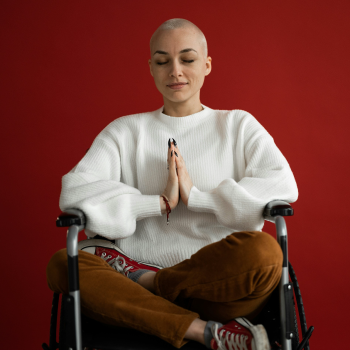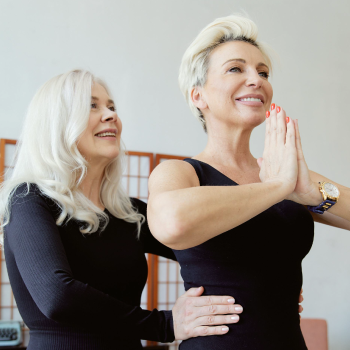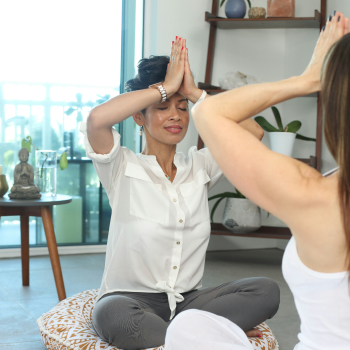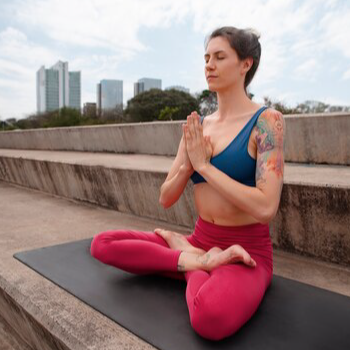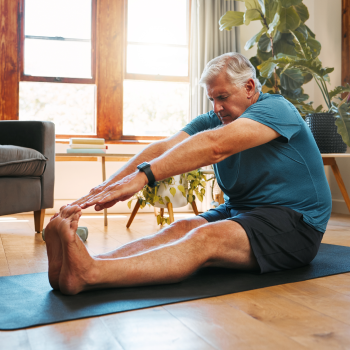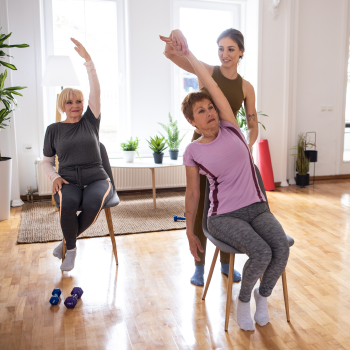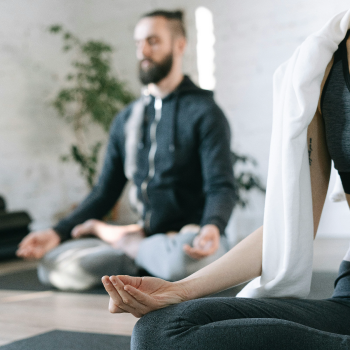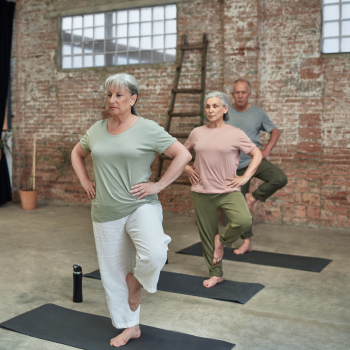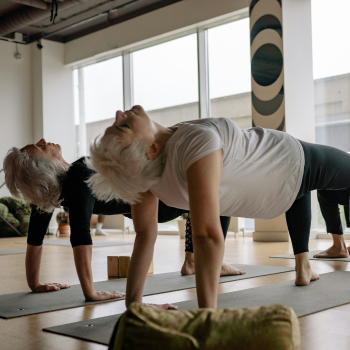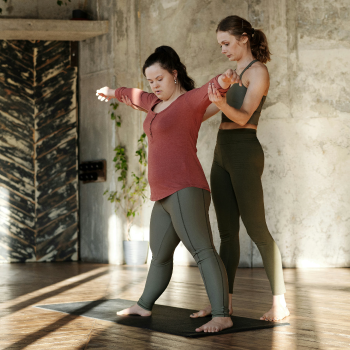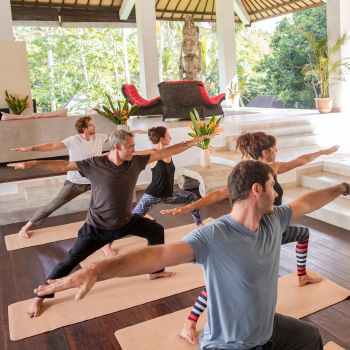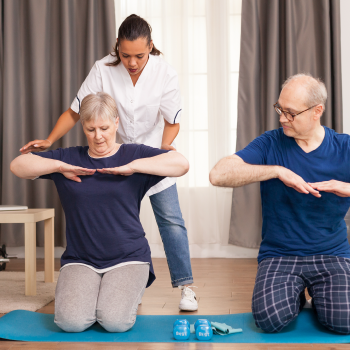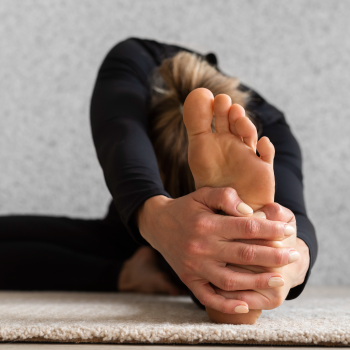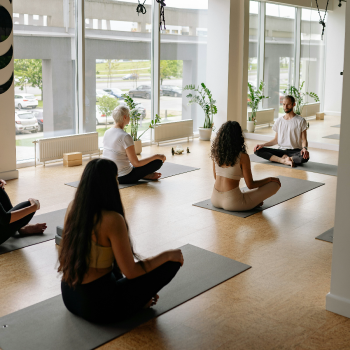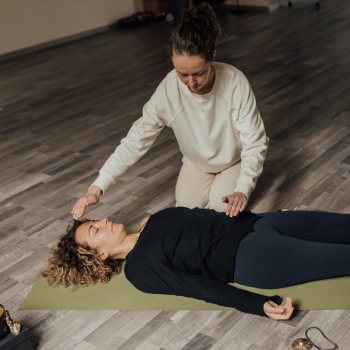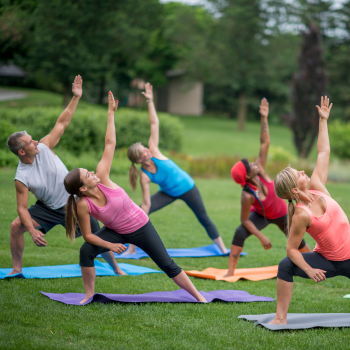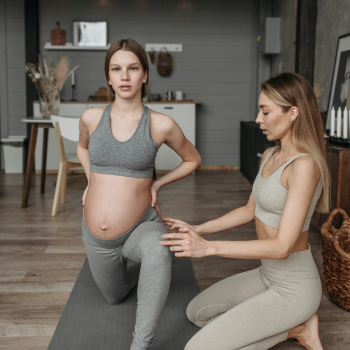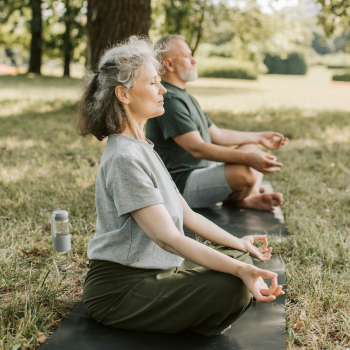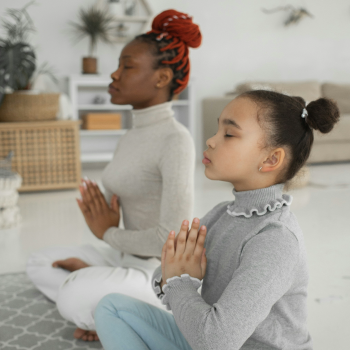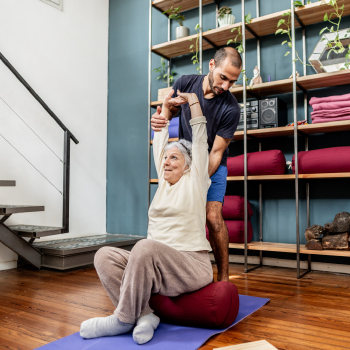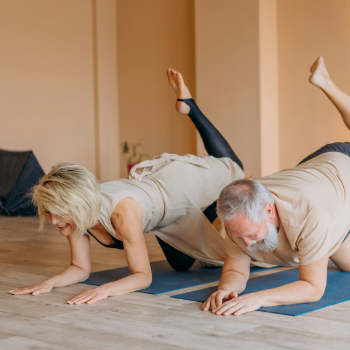Introduction
Discovering the Healing Power of Yoga for Lower Back Pain
Lower back pain is an ailment that affects millions of people globally, disrupting their daily lives and diminishing their quality of life. This condition can result from various causes, including poor posture, sedentary lifestyles, heavy lifting, or underlying health conditions like herniated discs and arthritis. Despite its prevalence, managing lower back pain can be challenging, with many conventional treatments offering only temporary relief.
Yoga therapy has emerged as a powerful alternative for those seeking a holistic approach to lower back pain management. Combining physical postures (asanas), breathing techniques (pranayama), and mindfulness practices, yoga therapy addresses both the physical and mental dimensions of pain.
This article delves into the intricacies of lower back pain, explores how yoga can alleviate symptoms, and provides practical guidance on incorporating yoga into your pain management regimen.
Understanding Lower Back Pain
Defining Lower Back Pain: Causes, Symptoms, and Health Implications
Lower back pain is characterized by discomfort or pain in the lumbar region, which is the area between the rib cage and the pelvis. The lower back supports much of the body's weight and is involved in almost every movement, making it particularly vulnerable to injury. Lower back pain can be classified into two main types: acute and chronic.
- Acute Lower Back Pain: This type of pain typically lasts for a few days to a few weeks and is often caused by a sudden injury, such as a muscle strain or ligament sprain. Acute lower back pain is usually sharp and severe, but it often improves with rest and conservative treatments like physical therapy.
- Chronic Lower Back Pain: If lower back pain persists for 12 weeks or longer, it is considered chronic. Chronic pain can stem from degenerative conditions such as osteoarthritis, herniated discs, or spinal stenosis. Unlike acute pain, chronic lower back pain may not always have an obvious cause and often requires a multifaceted approach for management.
Several factors contribute to the development of lower back pain, including:
- Muscle and Ligament Strain: Repeated heavy lifting or a sudden awkward movement can strain back muscles and spinal ligaments. If you’re in poor physical condition, constant strain on your back can cause painful muscle spasms.
- Herniated or Ruptured Discs: Discs act as cushions between the bones (vertebrae) in your spine. Sometimes, the soft material inside a disc can bulge or rupture and press on a nerve, causing back pain.
- Arthritis: Osteoarthritis can affect the lower back. In some cases, arthritis in the spine can lead to a narrowing of the space around the spinal cord, a condition called spinal stenosis.
- Skeletal Irregularities: A condition in which your spine curves to one side (scoliosis) also can lead to back pain, but generally only if the scoliosis is severe.
Understanding these underlying causes is crucial for effective treatment. Lower back pain not only restricts physical movement but also affects overall health, contributing to stress, depression, and a reduced quality of life.
Recognizing the Signs of Lower Back Pain
Common Symptoms of Lower Back Pain: What to Look Out For
Lower back pain can present itself in various forms, each with its distinct set of symptoms. Recognizing these signs early on can facilitate timely intervention and prevent the condition from worsening. Some of the most common symptoms include:
- Persistent Dull Ache: A constant, throbbing discomfort in the lower back, often worsened by prolonged sitting, standing, or physical activity. This pain can be aggravated by poor posture or lack of conditioning.
- Sharp or Stabbing Pain: Sudden, intense pain, often triggered by specific movements like bending or twisting, usually linked to nerve involvement, such as a herniated disc pressing on a nerve.
- Radiating Pain: Pain that spreads from the lower back to the buttocks, thighs, or feet, commonly associated with sciatica, caused by compression or irritation of the sciatic nerve.
- Limited Range of Motion: Stiffness that restricts movement, making it difficult to bend, twist, or perform daily activities like dressing or walking.
- Muscle Spasms: Sudden, involuntary contractions in the lower back muscles, often triggered by physical activity, which can be severe and last from seconds to minutes.
- Numbness or Tingling: A "pins and needles" sensation in the lower back or legs, indicating possible nerve involvement, common in sciatica or herniated discs.
If you experience any of these symptoms, especially if they persist or worsen, it is important to seek medical advice. Early diagnosis and intervention can prevent the condition from becoming chronic and help maintain a better quality of life.
Is Yoga Good for Lower Back Pain?
Exploring the Efficacy of Yoga in Managing Lower Back Pain
Yoga has garnered significant attention as a holistic approach to managing lower back pain, and for good reason. The practice offers a blend of physical postures, breathing techniques, and mindfulness exercises that collectively target the root causes of lower back pain. By focusing on the alignment of the spine, strengthening core muscles, and enhancing flexibility, yoga helps alleviate the discomfort associated with this condition.
Moreover, yoga’s emphasis on relaxation and stress reduction addresses the mental and emotional factors that can exacerbate pain. Numerous studies, including those funded by reputable institutions like the National Institutes of Health (NIH), have demonstrated that yoga can be as effective as conventional therapies, such as physical therapy, in managing chronic lower back pain.
Tailoring Yoga for Individual Needs
While yoga is beneficial for lower back pain, it’s essential to approach the practice with caution, especially if you’re new to yoga or experiencing severe pain. Certified yoga therapists, such as those available through My Yoga Network, can create personalized yoga routines that cater to your specific needs, ensuring that you practice safely and effectively.
How Long Does Yoga Take to Fix Back Pain?
Time Frame for Yoga’s Effects on Lower Back Pain
The duration it takes for yoga to relieve lower back pain can vary depending on the severity of the pain, the frequency of practice, and individual factors such as overall fitness and body condition. For some, relief may be felt after just a few sessions, while others may require several weeks or even months of consistent practice to experience significant improvement.
Setting Realistic Expectations
It’s important to set realistic expectations when starting yoga for lower back pain. While yoga can provide relief, it is not a quick fix. Consistent practice, typically over several weeks, is necessary to build strength, flexibility, and resilience. Most practitioners start noticing significant benefits within 6 to 12 weeks of regular practice, but individual results can vary.
Leading Experts in Lower Back Pain Management
Meet the Specialists: Authorities in Lower Back Pain Treatment and Research
Lower back pain is a complex condition that requires expertise from various fields, including orthopedics, physical therapy, and integrative medicine. Over the years, several experts have significantly advanced our understanding and treatment of lower back pain:
- Dr. Timothy McCall, M.D.: A board-certified internist and yoga therapist, Dr. McCall is the author of the book "Yoga as Medicine" and a prominent advocate for the therapeutic use of yoga. His work focuses on the scientific evidence supporting yoga as a complementary therapy for various medical conditions, including lower back pain.
- Dr. Andrew Weil: A pioneer in integrative medicine, Dr. Weil advocates for a holistic approach to health, combining conventional medicine with alternative therapies like yoga and meditation. He emphasizes the importance of lifestyle changes, including diet, exercise, and stress management, in managing chronic lower back pain.
- Dr. Loren Fishman: A leader in the field of yoga therapy, Dr. Fishman has conducted extensive research on the use of yoga in treating musculoskeletal conditions, including lower back pain. His innovative approach, combining medical expertise with yoga practice, has provided a bridge between Eastern and Western medicine. Dr. Fishman's research demonstrates that specific yoga poses can help alleviate pain, improve flexibility, and enhance overall spinal health.
These experts underscore the importance of a multidisciplinary approach to managing lower back pain, integrating traditional medical treatments with complementary therapies like yoga.
The Role of Yoga in Alleviating Low Back Pain
How Yoga Helps: Physical and Mental Benefits for Lower Back Pain
Yoga is a holistic practice that addresses both the physical and mental aspects of health, making it an effective tool for managing lower back pain. The benefits of yoga for lower back pain can be categorized into two main areas: physical benefits and mental benefits.
Physical Benefits of Yoga for Back Pain:
- Strengthening Core Muscles: Poses like Plank and Boat strengthen the core, reducing strain on the lower back and improving posture.
- Enhancing Flexibility: Yoga stretches tight areas like the hips, hamstrings, and lower back, easing tension and increasing range of motion.
- Improving Posture: Yoga promotes better posture, helping prevent lower back pain. Poses like Mountain and Tree Pose support proper spinal alignment.
- Reducing Inflammation: Yoga’s gentle movements and deep breathing can reduce inflammation, easing lower back pain by improving circulation and releasing anti-inflammatory compounds.
Mental Benefits of Yoga for Back Pain:
- Stress Reduction: Yoga reduces stress through deep breathing and meditation, activating the relaxation response and easing mental tension that can worsen pain.
- Mindfulness and Pain Perception: Yoga fosters mindfulness, helping individuals manage pain by changing their perception of it. Techniques like body scanning in Savasana aid in releasing tension.
- Emotional Resilience: Yoga promotes self-awareness and compassion, building emotional resilience to cope with the frustration, anxiety, and depression often associated with chronic lower back pain.
Incorporating yoga into a regular routine can lead to long-term relief from lower back pain, reducing the need for medication and enhancing overall well-being. The practice’s focus on holistic health makes it a valuable complement to conventional medical treatments.
Clinical Research Studies on Yoga for Lower Back Pain
Scientific Evidence: Key Findings on Yoga’s Effectiveness in Managing Lower Back Pain
The effectiveness of yoga in treating lower back pain has been validated by numerous clinical studies. These studies provide strong evidence supporting yoga as a safe and beneficial intervention for lower back pain:
- 2017 Study in the Annals of Internal Medicine: One of the most comprehensive studies on yoga for lower back pain was published in the Annals of Internal Medicine in 2017. The study compared the effects of yoga, physical therapy, and educational interventions on chronic lower back pain. The results showed that yoga was as effective as physical therapy in reducing pain and improving function.
- 2016 VA Yoga for Chronic Low Back Pain Trial: A randomized controlled trial conducted by the U.S. Department of Veterans Affairs (VA) examined the impact of yoga on veterans with chronic lower back pain. The study, published in Pain Medicine, involved a 12-week yoga program and found significant reductions in pain intensity and improvements in physical function among participants. The study also highlighted the role of yoga in reducing reliance on opioids and other pain medications, a critical concern in chronic pain management.
- 2013 The Cochrane Review on Yoga for Chronic Low Back Pain systematically analyzed randomized controlled trials to assess the effectiveness of yoga in managing chronic low back pain. The review found moderate-quality evidence indicating that yoga results in small to moderate improvements in pain and back-related function when compared to non-exercise controls. Additionally, yoga was associated with potential improvements in quality of life, though this evidence was less consistent.
- 2015 NIH-Funded Studies on Yoga and Back Pain: The National Institutes of Health (NIH) has funded several studies exploring the use of yoga for back pain. One NIH-funded study found that a specially designed yoga program for lower back pain was more effective than a self-care book in improving back function and reducing pain.
These studies highlight the growing recognition of yoga as an evidence-based intervention for lower back pain. They underscore the importance of integrating yoga into comprehensive pain management programs, particularly for individuals seeking non-pharmacological treatments.
Best Yoga Practices for Lower Back Pain Relief
Top Yoga Poses and Techniques for Easing Lower Back Pain
If you suffer from lower back pain, certain yoga poses can help by strengthening your core, improving flexibility, and relieving tension. Here are some effective poses:
- Child’s Pose: A gentle stretch for the lower back, hips, and thighs that promotes relaxation. Kneel, sit back on your heels, and fold forward, extending your arms.
- Cat-Cow Pose: This dynamic movement alternates between arching and rounding the back, enhancing spinal flexibility. Start on hands and knees, arching your back as you inhale (Cow Pose) and rounding it as you exhale (Cat Pose).
- Downward-Facing Dog: A full-body stretch that elongates the spine and strengthens the core. Begin on hands and knees, lift your hips to form an inverted V-shape.
- Bridge Pose: Strengthens the lower back, glutes, and hamstrings. Lie on your back, knees bent, and lift your hips toward the ceiling.
- Supine Twist: Stretches the spine and hips, relieving tension. Lie on your back, drop your knees to one side, and turn your head in the opposite direction.
- Sphinx Pose: A gentle backbend that strengthens the lower back. Lie on your stomach, lift your chest with forearms flat on the floor.
- Pigeon Pose: Stretches the hip flexors and lower back. From a tabletop position, bring one knee forward and extend the opposite leg back.
Practicing these poses regularly, with attention to proper alignment and breath control, can significantly reduce lower back pain and enhance overall spinal health. It is important to listen to your body and avoid pushing into pain. Modifications and props such as yoga blocks, straps, and blankets can help make the poses more accessible and comfortable.
Do’s and Don’ts of Yoga for Lower Back Pain Management
Do’s: Essential Practices for Safe Yoga
- Consult with a Healthcare Professional: Before starting a yoga routine, especially if you have chronic lower back pain or other health conditions, consult with your doctor or a certified yoga therapist to ensure that yoga is a safe option for you.
- Start with Gentle Poses: Begin with gentle, beginner-friendly poses like Child’s Pose, Cat-Cow, and Sphinx Pose. These poses help stretch and strengthen the back without putting too much strain on the body.
- Use Props: Don’t hesitate to use yoga props like blocks, straps, and blankets to modify poses. These tools can help you maintain proper alignment and prevent strain on the lower back.
- Listen to Your Body: Pay attention to your body’s signals. If a pose causes pain or discomfort, stop immediately and modify the pose or skip it altogether.
Don’ts: Common Mistakes to Avoid
- Don’t Push Through Pain: Yoga should never be painful. If you experience sharp or intense pain, stop the activity and consult with your yoga therapist or healthcare provider.
- Avoid Deep Forward Bends: Forward bends can put excessive strain on the lower back, especially if not performed correctly. If you have lower back pain, it’s best to avoid deep forward bends or practice them with modifications.
- Don’t Rush Your Practice: Progress in yoga should be gradual. Avoid pushing your body into advanced poses too quickly. Focus on mastering the basics and gradually build up to more challenging poses.
- Avoid High-Impact Movements: High-impact movements or poses that require significant twisting or bending should be avoided as they can aggravate lower back pain. Stick to slow, controlled movements to minimize the risk of injury.
Finding a Certified Yoga Therapist for Lower Back Pain
Choosing the Right Yoga Professional: Credentials and Expertise in Yoga Therapy
When searching for a yoga therapist specializing in lower back pain, thorough vetting is essential to ensure effective treatment and a supportive environment. It's crucial to prioritize therapists with strong credentials from reputable organizations like the International Association of Yoga Therapists (IAYT) and specialized training in therapeutic yoga for back pain. This combination ensures a comprehensive approach that addresses the physical aspects of healing.
To determine a therapist's suitability, potential clients should ask key questions related to their qualifications and experience. Important inquiries include the therapist's specific training in yoga therapy for lower back pain, their experience working with similar clients, and their commitment to a personalized, client-centered approach. Understanding how the therapist tailors yoga practices to individual needs and sensitivities is vital. Additionally, asking for success stories from previous clients can provide reassurance and confidence in the therapist's ability to guide effective recovery.
To find a qualified yoga therapist, consider using My Yoga Network. Our platform simplifies the process of finding certified, vetted professionals who are experts in therapeutic yoga for lower back pain. MYN's rigorous verification process ensures that all therapists meet high standards of proficiency and adhere to best practices.
It also provides access to patient reviews and detailed therapist profiles, enabling clients to make informed decisions that align with their specific needs and therapeutic goals. By utilizing MYN's resources, clients embark on a healing journey supported by compassionate, certified yoga therapists dedicated to their holistic well-being.
Key Questions to Ask Your Yoga Therapist
Essential Inquiries: What to Ask Your Yoga Therapist About Lower Back Pain Treatment
Before beginning your yoga therapy sessions, it's crucial to have a clear understanding of your therapist’s approach and how it aligns with your specific needs. Asking the right questions can help ensure that you're in good hands and that your therapy is tailored to effectively address your lower back pain. Here are some key questions to consider:
- What experience do you have in treating lower back pain?
Understanding your therapist's background is crucial. Ask about their experience with lower back pain, including specific cases they've treated, techniques used, and outcomes achieved. This helps ensure they can design a treatment plan suited to your needs. - How will you customize my yoga practice for my specific lower back pain?
Personalized plans are key to targeting your pain effectively. Your therapist should explain how they'll tailor your sessions based on factors like pain level, lifestyle, and any underlying conditions. - What yoga poses and techniques will be included in my treatment plan?
Knowing the specific poses and practices your therapist plans to use helps you understand how the therapy will address your pain. Ask how these will relieve your lower back pain and improve spinal health. - How will we measure progress, and what results should I expect?
Discuss progress metrics to set clear expectations. Ask how often progress will be reviewed, signs of improvement, and how the plan will be adjusted if needed. - Are there any contraindications or precautions I should be aware of?
Inquire about any poses or techniques that should be avoided due to your condition, to prevent aggravating your pain. - Will you work with my other healthcare providers?
Ask if your therapist will coordinate with other healthcare providers to ensure comprehensive care that complements other treatments.
By asking these questions, you'll be better equipped to choose the right yoga therapist and ensure that your therapy is both safe and effective. This proactive approach will help you get the most out of your yoga therapy and set you on a path toward lasting relief from lower back pain.
Conclusion
Embracing Yoga as a Holistic Approach to Lower Back Pain Relief
Yoga therapy offers a holistic approach to managing lower back pain, addressing both the physical and mental aspects of this common condition. By incorporating yoga into your routine, you can improve flexibility, strengthen muscles, reduce stress, and enhance your overall quality of life.
If you're struggling with lower back pain, consider exploring yoga therapy as a treatment option. And when searching for a qualified yoga therapist, don't forget to check out My Yoga Network. This platform connects you with certified professionals who can guide you on your journey to pain relief and wellness.
Resources
- Annals of Internal Medicine, 2017: Study comparing yoga, physical therapy, and education for chronic lower back pain. Link.
- VA Yoga for Chronic Low Back Pain Trial, Pain Medicine: Research on yoga’s impact on veterans with chronic lower back pain. Link.
- Cochrane Collaboration, Review on Yoga for Chronic Low Back Pain: Systematic review of yoga’s effectiveness in chronic lower back pain. Link.
- National Institutes of Health (NIH), Yoga and Back Pain: NIH-funded studies exploring yoga as a treatment for back pain. Link.
Written By: Ram on 08-27-2024

